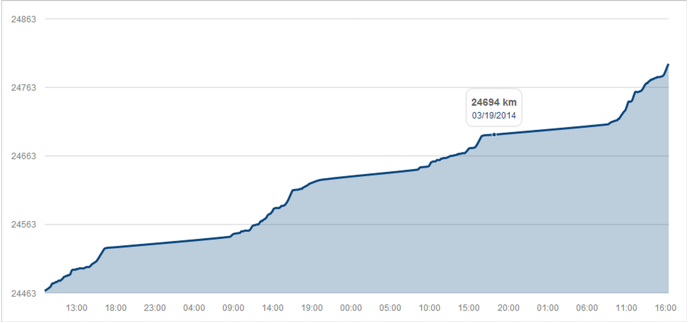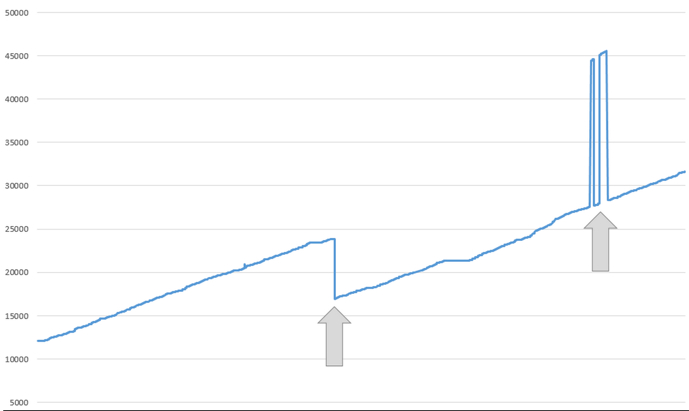Fleet Management
How your vehicle odometer works
Vehicle odometer is one of the most critical pieces of information for fleet managers. Read about potential issues and how Geotab maintains accuracy.
Your Geotab GO device understands a lot about your vehicle’s health and the behavior and habits of everyone that drives it. When connected to your OBD II port, the Geotab GO device collects all sorts of engine diagnostics and then combines that with real time location history, allowing you to accurately understand and recreate where the vehicle went and what happened along the way. For fleet managers, one of the most critical pieces of information collected is the vehicle odometer.
Why is the Vehicle Odometer Important?
A vehicle’s odometer is not just any number — for some fleets it represents milestones for scheduled maintenance including oil changes, tire rotations and comprehensive vehicle inspections. With Geotab, your vehicle odometer is always up to date and extremely accurate. This article explores how this all happens.
As your vehicles are driven, your GO device will automatically record its location while intelligently splitting it all up into individual trips. Later on, when you run reports, you will be able to quickly determine where vehicles started and ended their trips and map out the path between them to show which places the vehicles visited.
If we were to visualize this, a vehicle’s odometer increases over time as trips are driven. A change on the vertical axis represents the distance of a trip whereas the horizontal axis is the duration spent on the road.

Vehicle odometer value increasing over time.
At Geotab, we have found that not all vehicles are created equal. The way engine diagnostic information is read may be different depending on the manufacturer. Whether the issue is a matter of converting miles to kilometers, or something more complicated, there isn’t an industry standard just yet.
Thankfully, Geotab provides an end-to-end telematics solution where we can actively support new vehicles as they are produced or introduce support for existing vehicles that require changes. Unlike other telematics providers who sell off-the-shelf GPS trackers, all of our hardware and software is created by us. That means everything, right down to the firmware on your Geotab GO device, can be changed to ensure that the data your fleet receives is meaningful and accurate.
Potential Issues and Maintaining Accuracy
Under the hood, there are a lot of calculations being done in order to maintain an accurate odometer. However, there are circumstances where what you see on MyGeotab may not be in sync with what your vehicle dashboard says. Let’s go over what can go wrong and then we’ll explain how we can get things straight again.
Possible Issues with Odometer:
- A vehicle’s engine was replaced but the on-board computer continues based on the original engine.
- The GO device has been tracking multiple vehicles each with varied odometer values.
- The GO device firmware does not currently support your vehicle.
- When entering in the odometer manually to MyGeotab, a typo was made.
All of these issues present a problem when you run reports such as an IFTA report which uses the odometer value to determine how much your vehicles drove within individual taxable states or provinces. Depending on the issue at hand, you may see no values for the odometer or in some circumstances you may see values which look like they go up and down.
For more details on IFTA and fuel tax reporting in MyGeotab, please read this quick guide.
In order to provide the most effective way of tracking your vehicle’s odometer, Geotab uses a combination of both on-board computer readings with highly accurate GPS to measure how far you go. That way, if your vehicle is unsupported currently, we will use GPS as a secondary means of collecting your odometer.
Our customers should be aware that GPS is a line-of-sight technology and depending on where a vehicle is driven or parked, there may be instances where the GPS connection needs to be re-established. This can happen when driving through tunnels, parking underground or under some severe weather conditions. Therefore, it is possible that your vehicle may travel slightly more than what is reported when only using GPS as a means for tracking your odometer.
How to Update the Vehicle Odometer in MyGeotab
We understand that you want to get the most out of your fleet and keep costs down. When replacing an engine, you can simply update the vehicle odometer in MyGeotab to instantly correct what the vehicle displays on your dashboard.
After doing so, to accommodate the difference between what you entered and the previous odometer value, MyGeotab will maintain an “offset value” behind the scenes for your vehicle. This way, when new information comes in for this vehicle, we can simply add the offset to the number and arrive at what your new engine should read. Please note that in previous versions of MyGeotab, the offset was a manual process and we have simplified it entirely now such that you don’t even need to worry about it anymore — just enter the mileage as it should be and you’re done.
Some fleets, for example businesses that provide test drives or vehicle rental companies, place the GO device into multiple vehicles. While this use case is fine, it means that the engine data of multiple vehicles are treated as a single vehicle.
See Also: Benefits and Steps To Transferring Telematics Devices Between Vehicles
From the graph below, there are two distinct issues.
- The first drop-off (left side) is what happens when the Geotab GO device is removed and installed in another vehicle with a lower odometer.
- Spikes are caused by entering incorrect odometers manually in MyGeotab; offsets are created and removed a couple of times and then everything returns to normal.

At this point, we’ve explored all the possible scenarios where your odometer may become out of sync, so it’s time to hear about what Geotab is doing about it.
Perfecting Location History
We released an update to MyGeotab which includes a sophisticated algorithm which examines the location history of every vehicle in your fleet to automatically smooth out and correct anomalies. It works by starting at what’s happening right now in your vehicle and then works its way backward through everywhere you’ve been.
Your location history is a collection of many different pieces of information. Everything from individual coordinates, entire trips, to what was happening inside your engine is used to recreate where you went with precision accuracy. Based on all the odometer readings we’ve already collected from your vehicle, we calculate whether those values are correct based on the GPS distance we already know. When a change needs to be made, that odometer reading is updated and we continue along until we reach the time when you first installed the GO device in your vehicle.
At Geotab, we’re very excited to announce this update because it means that the information we show you is even more accurate than ever. The reports you run and depend on will have all this updated information and there is nothing you need to do for it to happen.
